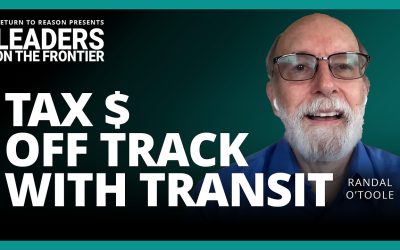How much did Canadians pay for Petro-Canada? David L. Yager, a Calgary oil field service industry executive, asks it in a different way. How much are we now paying? The federal government sold its last Petrocan shares a couple of years ago, and you may have thought that we had finished with this sorry 1970s experiment in state-owned oil companies. Not so.
We sold off the assets for less than we paid, then kept all the debt. By Mr. Yager’s calculations, a detailed spreadsheet that covers 25 years, we now owe $80-billion for Petrocan — more than 20 per cent of the national debt. At 5-per-cent interest, we’re paying $4-billion a year for an enterprise we don’t own. This is slightly less than we pay for national defence; slightly more than we spend for foreign aid.
Mr. Yager is president and chief executive officer of HSE Integrated, a company listed on the TSX Venture Exchange that specializes in oil field safety services. He is also an occasional journalist, publishing The Roughneck magazine for a number of years and writing a column for Oilweek magazine. It was for Oilweek that he calculated the debt bequeathed by Petrocan.
Liberal prime minister Pierre Trudeau established Petrocan in 1975. In its first direct acquisition, the company paid $342.4-million for Atlantic Richfield (1976). It paid $1.4-billion for Pacific Petroleum (1979) and $1.4-billion for Petrofina (1981). It paid $347.6-million for Gulf’s upstream assets (1982) and $1.8-billion for Gulf’s downstream assets (1985). Along the way, it accumulated 10,000 people on the payroll, twice as many as it needed.
Although oil prices collapsed in the mid-eighties, Petrocan kept spending. As Mr. Yager observed: “With its move into refining and retailing, Petro-Canada’s original mission (security of supply) was forgotten. The new marketing slogan was ‘It’s Ours.’
“As for Petro-Canada’s role as the window on the industry, Ottawa wanted the best view money could buy. Petro-Canada built the tallest office tower in Calgary and placed its CEO on the top floor to keep a watchful eye on the oil capital of Canada.”
We’ll never know the entire public investment but it had certainly exceeded $6-billion when Conservative prime minister Brian Mulroney put the company on a path to privatization.
For his calculations, Mr. Yager made two assumptions – that the funds for Petrocan’s acquisitions were borrowed (and remained borrowed) and that the debt compounded in the normal way. He used the current value of the money in the years in which it was borrowed, then expressed the accumulated debt in 2005 dollars. He used the Bank of Canada rate (on each successive Jan. 1) plus one percentage point to determine interest charges. On the gargantuan balance, he says: “We’ll continue to pay interest on this debt all of our lives. Rest assured that it is ours.”
It was fashionable in the 1970s for governments to buy (or seize) investments in oil and gas. Venezuela nationalized its oil industry in 1976; Iran’s new Islamic government did so in 1979. It’s a bit embarrassing to think that Canada made itself part of this stampeding herd – and followed it to the very edge of the cliff. Venezuela’s oil industry is now notoriously inefficient and inept, by some accounts close to collapse. Although it has huge reserves, Iran pumps less oil now for the mullahs than it did for the shah.
In its August 12-18 issue, The Economist drew the ultimate conclusion: The world needs the privatization of all state-owned oil companies.
“When activists, journalists and others speak of Big Oil, you know exactly what they mean: companies such as Exxon Mobil, Chevron, BP and Royal Dutch Shell,” the magazine said.
“Yet Big Oil is pretty small next to the industry’s true giants: the national oil companies owned or controlled by the governments of oil-rich countries, which manage more than 90 per cent of the world’s oil. Of the 20 biggest oil firms, in terms of reserves, 16 are national oil companies. Saudi Aramco, the biggest, has more than 10 times the reserves of Exxon.
“Few of the princes, politicians and strongmen who wield ultimate authority over these firms can resist the urge to meddle. At best, this leads to the sort of inefficiencies found at most state-owned firms: overstaffing and underinvestment. At worst, the business of pumping and selling oil is entirely subsumed by politics. In either case, national oil companies produce less oil, more expensively, than they should.”
The price of oil is, indeed, too high. It’s not because oil is scarce or will become scarce any time soon. At best, as The Economist suggests, it’s too high because the national oil companies are run by inept managers. At worst, it’s too high because they are run by tyrants and thieves.
It’s a good thing that some of us are getting a lot more productivity from every barrel. It’s a good thing some of us have Big Oil to supply it.
Neil Reynolds was a columnist for The Globe and Mail. He was editor-in-chief for The Vancouver Sun and the Ottawa Citizen.
First published here, August 25, 2006.


